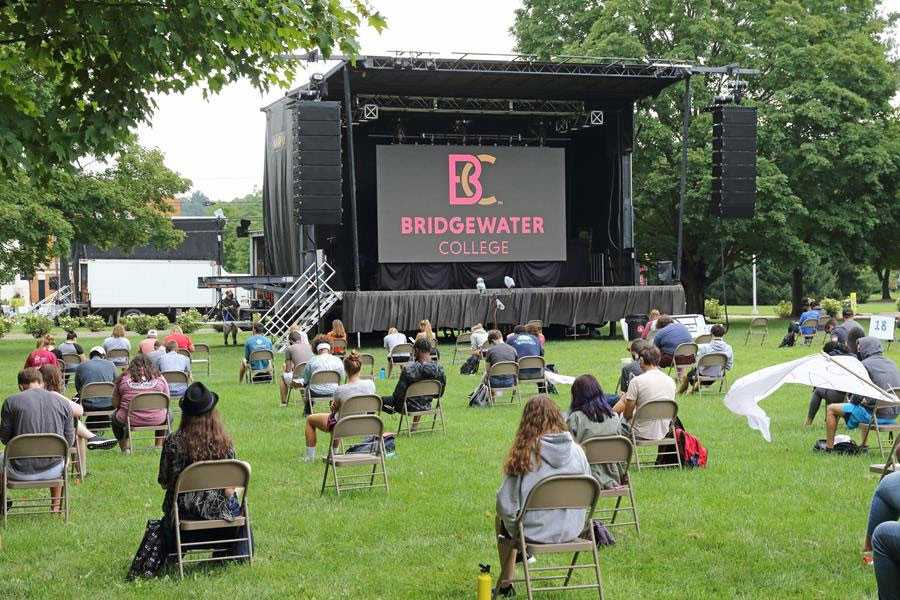Martin Audio WPL services College events
- Details

Servicing a wide range of events in the mid-Atlantic region, Southard found much of their workload in the surrounding East Coast states cut off after COVID-19 struck … and even in the academic sector - a market segment in which they are usually particularly active - the normally busy Orientation Events week was virtually wiped out.
One that did go ahead, albeit under heavily moderated conditions, was Bridgewater College. The presence of COVID-19 meant an enlarged role for Southard at this Liberal Arts institution, as the students were divided into pods and the classrooms were moved outside onto two large grassy spaces providing plenty of room for social distancing.
Each of the two back-to-back main stages contained a pod for 250 students, with a road running between, respectively serviced by Martin Audio WPL and WPS rigs. However, it was not without its challenges.
Southard Audio managing partner and operations manager, Jason Misterka, noted that the College wanted to avoid either of the stages feeling like a ‘second stage’.
“We used a wireless HD video stream to cross the street, and a wireless audio stream as a redundant, allowing announcements to be made locally from either stage,” he explained. “The internet hit the WPL stage and multiparty Zoom calls were shown on both large LED walls, with our video team mixing between local IMAG and the Zoom calls. Our video team also sent out a live stream of the event to the students who were attending virtually.” In non-COVID times, he said, the speaker deployment “would easily have covered 6,000 people.”
Each hang contained eight WPL and WPS line array elements respectively. Each stage also contained a single array of three SXH218 subwoofers, while a CDD-Live 15 on each stage acted as a monitor, and two CDD-Live 8 in the back of the box trucks served as near-field monitors. Positioned on the stage itself (to keep dry and safe for the week), the subs were set up cardioid to minimise bleed; and since subwoofer content was a fairly small part of these events, and the back half of the stage was not being used by the client, it worked well.
The primary consideration had been isolating each stage. “We set the subwoofers up as a centre cardioid cluster to reduce bleed on the stage itself,” Jason explained. “The WPL and WPS systems were set to ‘hard avoid’ [in the dedicated Display software] for the stage and behind, to prevent bleed between the stages. When standing in front of the PA on one side of the field, it was possible to tell that the other PA was active only by the slightest of reflections coming back at you, which was not a problem.” The signal source itself was largely spoken word with occasional music playback.
The WPL system was run in two-box resolution from two iK42 amp racks. The WPS system was also initially run in two-box resolution using a single iK42 amp rack (three amplifiers, including the subwoofer amplifiers). “But we ended up adding an amplifier and changing the WPS over to one-box resolution to assist in limiting the reflections off a building at the edge of the coverage area. We also changed the ‘hard avoid’ location in Display to be that building, and that adjustment certainly improved the situation.”












